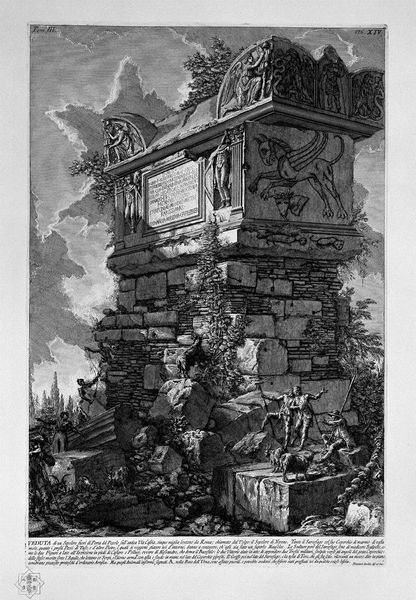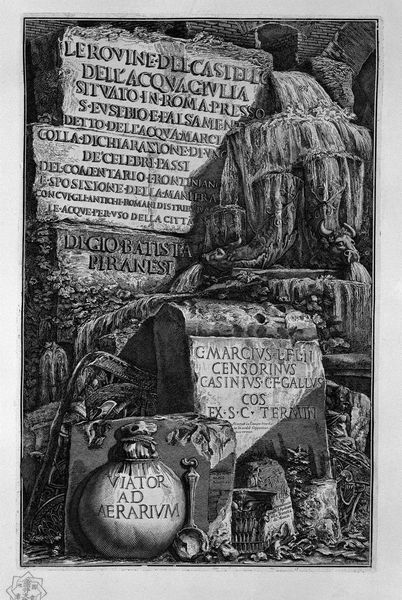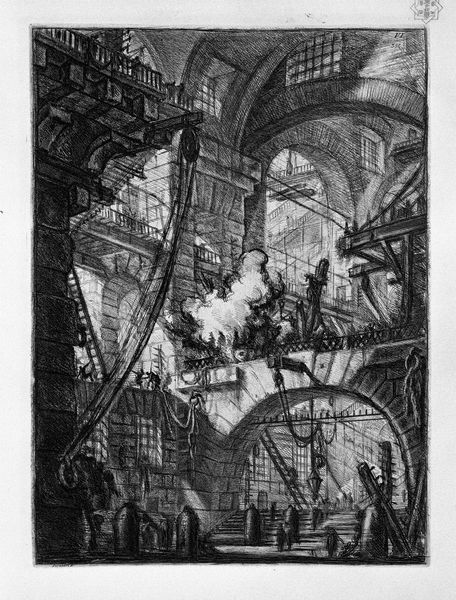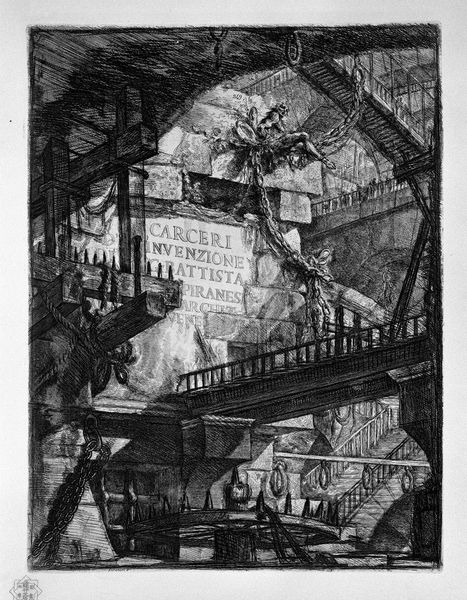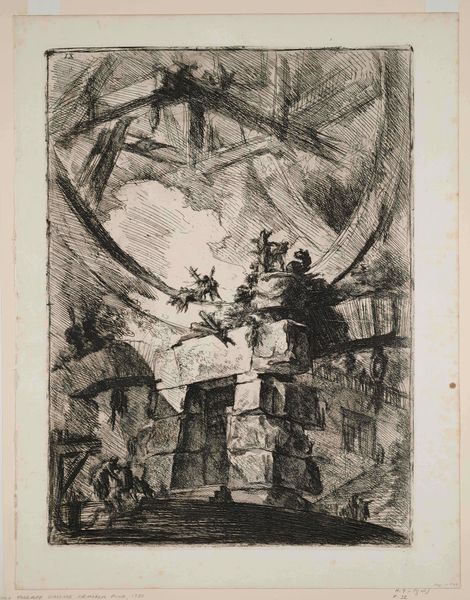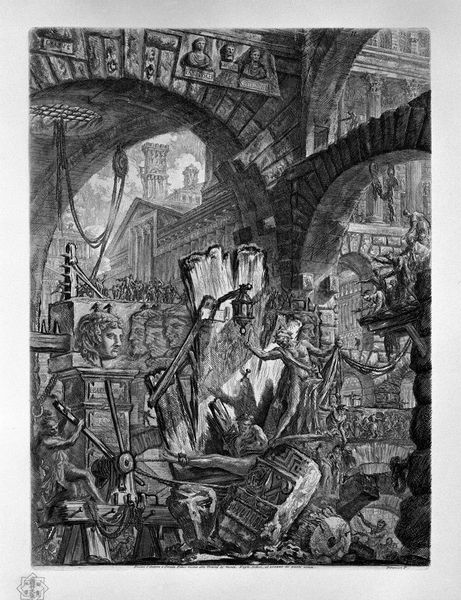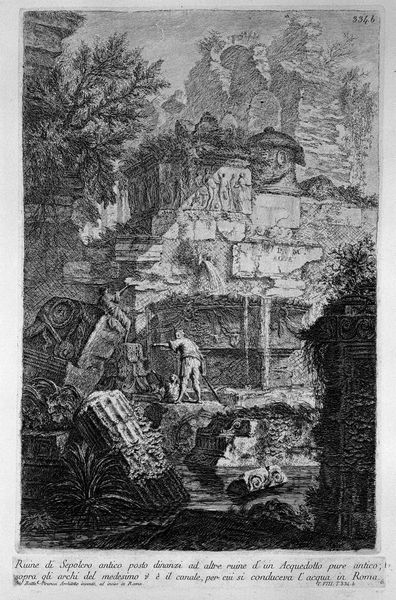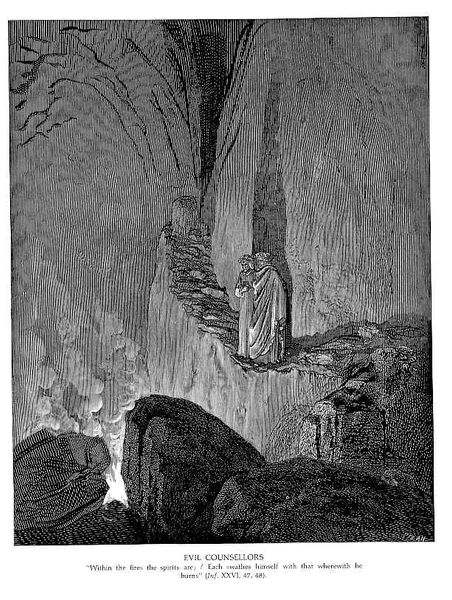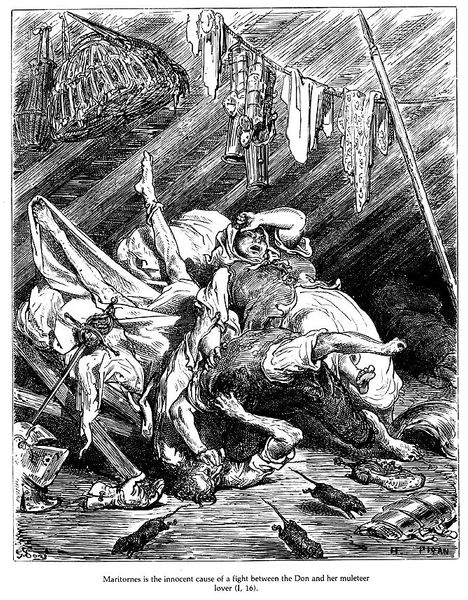
The Roman antiquities, t. 3, Plate I. Cover Page. Over a large cinerary urn broken bones and between the lamps, and recorded the title.
0:00
0:00
print, etching, photography, engraving
#
allegories
#
allegory
#
symbol
# print
#
etching
#
photography
#
romanesque
#
history-painting
#
engraving
#
monochrome
Copyright: Public domain
Giovanni Battista Piranesi created this etching, “The Roman Antiquities, t. 3, Plate I. Cover Page,” in 18th-century Italy. It captures the spirit of the Grand Tour, where wealthy Europeans traveled to Italy to experience its classical past. Piranesi wasn't just documenting ancient Rome; he was actively constructing it for his contemporaries. The image is of an enormous broken cinerary urn, bones, and lamps that seem to explode out of the image. With the ruins, he’s not just showing us what's left, but prompting us to imagine the grandeur that once was. Consider that the Catholic church and other institutions of the time were invested in the legacy of Rome, and Piranesi's work fed into this cultural moment, shaping perceptions of history. To fully grasp Piranesi's impact, we can consult historical archives, architectural treatises, and the social history of 18th-century tourism. Art is not just what we see, but how it connects to the world around it.
Comments
No comments
Be the first to comment and join the conversation on the ultimate creative platform.


